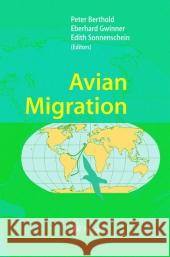Avian Migration » książka
Avian Migration
ISBN-13: 9783642077807 / Angielski / Miękka / 2010 / 610 str.
P. Berthold and E. Gwinnd Bird migration is an intriguing aspect of the living world - so much so that it has been investigated for as long, and as thoroughly, as almost any other natural phenomenon. Aristotle, who can count as the founder of scientific ornithology, paid very close attention to the migrations of the birds he ob- served, but it was not until the reign of Friedrich II, in the first half of the 13th century, that reliable data began to be obtained. From then on, the data- base grew rapidly. Systematic studies of bird migration were introduced when the Vogelwarte Rossitten was founded, as the first ornithological- biological observation station in the world (see first chapter "In Memory of Vogelwarte Rossitten"). This area later received enormous impetus when ex- perimental research on the subject was begun: the large-scale bird-ringing experiment initiated in Rossitten in 1903 by Johannes Thienemann (who was inspired by the pioneering studies of C. C. M. Mortensen), the experiments on photoperiodicity carried out by William Rowan in the 1920s in Canada and retention and release experiments performed by Thienemann in the 1930s in Rossitten, the first experimental study on the orientation of migratory birds. After the Second World War, migration research, while continuing in the previous areas, also expanded into new directions such as radar ornithology, ecophysiology and hormonal control mechanisms, studies of evolution, ge- netics, telemetry and others.











